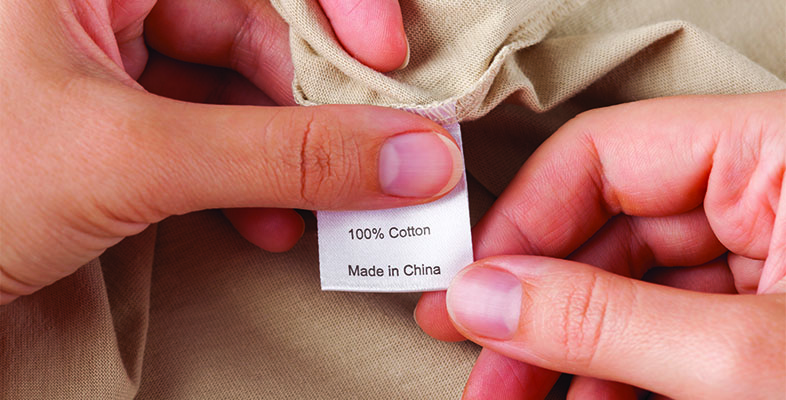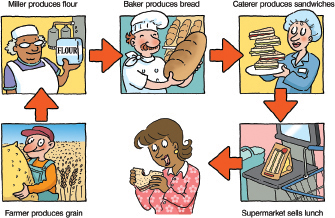1.1.3 From inputs to goods sold in markets: stages of production
Activity 2 also shows that firms are not working in isolation; they are only part of the supply story. In the production of a loaf of bread there will be other firms involved. There will be a farmer growing the grain, a miller processing the wheat and transforming it into flour, a baker producing the bread and a retailer (or two) to sell the bread. Therefore, the supply of a final good to the customer will usually involve more than one stage of production and more than one firm.
This process of linking the stages of production required to produce a loaf of bread can be thought of as a chain. This relationship between the stages of production is known as the supply chain.
The supply chain may involve many firms working at each stage, all producing and selling their goods on to the next stage of production. However, it may also be true that one firm is involved at more than one stage of the supply chain. A firm that mills wheat into flour may also bake the bread itself, or a dairy farmer may use the milk to produce other products such as butter or cheese. A farmer might choose to retail their own produce directly rather than using a retailer to sell their output to the customer. In these cases, where a firm operates at more than one stage of production, the firm can be said to be vertically integrated. Before you go into detail about what vertical integration is, you’ll first look at the supply chain of a t-shirt.

